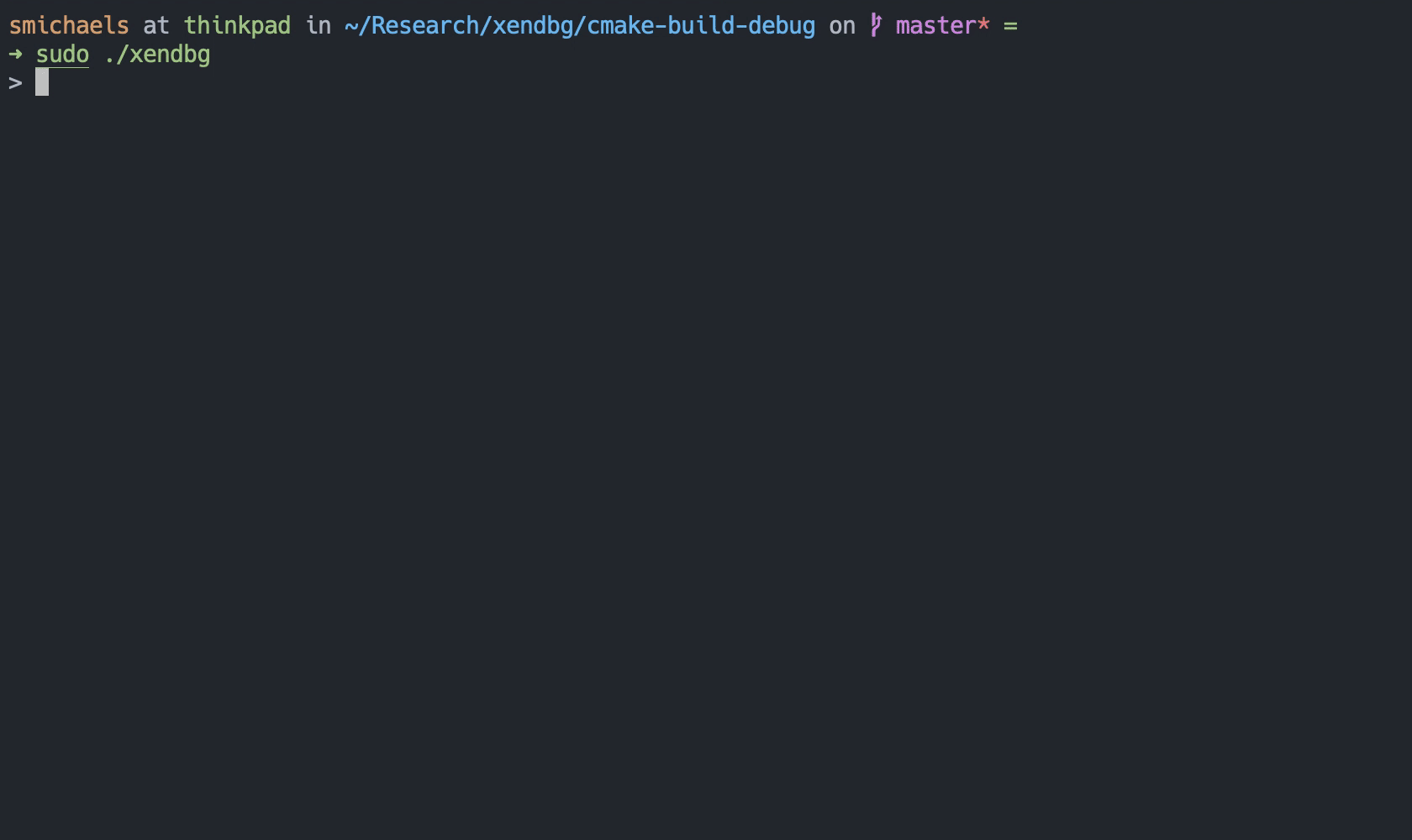nccgroup / Xendbg
xendbg - A modern Xen debugger
xendbg is a feature-complete reference implementation of a modern Xen VMI debugger,
superseding Xen's own limited and rarely-maintained
gdbsx.
It can debug both paravirtualized (PV) and hardware virtualized (HVM) guests,
and provides both a standalone REPL and an LLDB server mode.
Note: The author of this program no longer works at NCC Group. As such, this repository has been archived, and development has moved to a new fork at SpencerMichaels/xendbg. Please direct any new issues, pull requests, and communication there.
Features
- Supports 32- and 64-bit x86 Xen guests, both PV and HVM
- LLDB server mode
- Standalone REPL mode
- Register read/write
- Memory read/write
- Breakpoints
- Watchpoints (HVM only due to Xen API limitations)
Server mode
When started with --server, xendbg will start up an LLDB server on the
specified port. A Xen domain may also be specified using the --attach option,
which will tell xendbg to connect to that domain immediately and close the
connection when it is destroyed. Otherwise, it will open one port per Xen
domain, starting at the given port and counting up. The server will open and
close ports as domains are created and destroyed, and will only exit when the
user explicitly sends a CTRL-C.
In either case, LLDB can then connect to any of xendbg's ports using the
gdb-remote command, providing the user with a seamless and familiar debugging
experience.
REPL mode
If started without --server, xendbg will run a standalone REPL in the
foreground. This mode still provides all of the debugging features that the
LLDB server supports, and some users may prefer it over LLDB's CLI interface.
xendbg's REPL, while somewhat simpler than that of the LLDB CLI, does provide
common CLI debugger comfort features, including tab completion, expressions,
and variables.
Type help at the REPL for a full list of commands.
Features
-
Contextual tab completion: Hit
<tab>at any point to list completion options; if only one option is available, it will be expanded automatically. -
Expressions: Any statements that take numerical values can also take
expressions, e.g.
disassemble $rip+0x10 0x20. Besides addition, subtraction, multiplication, division, and parenthesization, expressions also support:- The C-style dereference operator
*, which will interpret its operand as an address in guest memory and read either a 32- or 64-bit value from that location, depending on the bitness of the guest. - Symbol resolution via the
&operator.
- The C-style dereference operator
-
Symbols: Symbols can be loaded via
symbol load <filename>, and thereafter any valid symbol name prefixed with&will evaluate to the address of that symbol and can be used in an expression, e.g.print &rumprun_main1 -
Variables: Any C-style variable name prefaced with a dollar sign
$is treated as a variable. Variables can be set withset $my_var = {expression}and unset withunset $my_var. In addition, when attached to a guest, its registers will be given variable semantics, so they can be read/written directly via theset/printcommands, e.g.set $rax = $rbx + 0x1000.
Command line options
-h,--help Print this help message and exit
-n,--non-stop-mode Enable non-stop mode (HVM only), making step,
continue, breakpoints, etc. only apply to the
current thread.
-d,--debug Enable debug logging.
-s,--server PORT Start as an LLDB stub server on the given port.
If omitted, xendbg will run as a standalone REPL.
-i,--ip PORT Needs: --server
Start the stub server on the given address.
-a,--attach DOMAIN Attach to a single domain given either its domid
or name. If omitted, xendbg will start a server
for each domain on sequential ports starting from
PORT, adding and removing ports as domains start
up and shut down.
Building and installing
Automatically
Ubuntu users can easily build and install xendbg by running install.sh in the
root of the project (see also build.sh). The script will install the
necessary packages, pull and build the third-party dependencies, and finally build
and install xendbg.
Manually
xendbg depends on the packages listed below. Exact names may differ on non-Ubuntu
systems; these are from Ubuntu. Note that xendbg must be built with clang and
libc++, as it uses C++17 features whose libstdc++ implementations are known
to differ depending on the version of GCC.
libcapstone-dev
libspdlog-dev
libxen-dev
libreadline-dev
clang
libc++abi-dev
libc++1
libc++-dev
xendbg also requires some third-party dependencies that are not available as
Ubuntu packages.



